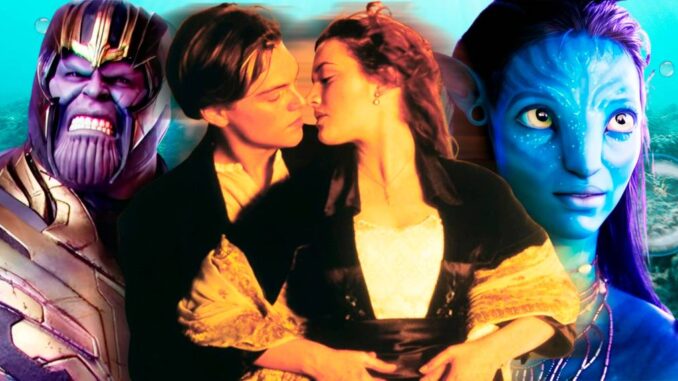
The Icy Truth: Titanic's Disney+ Resurgence and the Illusion of Everlasting Blockbuster Dominance
The shimmering blue iceberg, once a chilling symbol of hubris and tragedy, is back. Not in reality, thankfully, but trending on Disney+. The renewed interest in James Cameron's Titanic, decades after its initial theatrical release, serves as a potent reminder of a shocking truth often obscured by the blinding spectacle of modern $2 billion movies: even the most monumental cinematic achievements are ultimately subject to the ebb and flow of cultural relevance, their dominance as fleeting as the lives lost on that fateful night.
The allure of Titanic is undeniable. It was, and in many ways still is, a spectacle. A grand romance set against the backdrop of historical catastrophe, it boasts breathtaking visuals, a sweeping score, and iconic performances. Its initial release shattered box office records, captivated audiences worldwide, and cemented its place in the cultural lexicon. But its resurgence on Disney+, a platform geared towards a different demographic and a vastly different mode of consumption, highlights the fragility of that dominance. The film is no longer experienced as a communal event, a shared spectacle in a darkened theater, but as an individual, on-demand selection, nestled between superhero sagas and animated adventures.
The "shocking fact" isn't that Titanic is now available on a streaming service. It's that its presence there, while welcome to some, simultaneously underscores the transient nature of blockbuster success. We live in an era of constant stimulation, bombarded by new content vying for our attention. Marvel movies break box office records every year, Star Wars expands its universe across multiple platforms, and Pixar continues to churn out emotionally resonant masterpieces. Each of these films boasts staggering budgets, sophisticated marketing campaigns, and legions of devoted fans. Yet, the question remains: will they command the same cultural presence twenty, thirty, or even a hundred years from now?
The answer, more likely than not, is a nuanced "partially." While their cultural impact will undoubtedly leave a mark, the specific intensity of their reign, the overwhelming ubiquity they once enjoyed, is unlikely to be replicated in a perpetually evolving media landscape. Future generations will encounter these films through the lens of nostalgia, academic study, or curated selections. They will be dissected, analyzed, and perhaps even re-evaluated in the light of new societal perspectives. They will become artifacts, historical footnotes in the ever-growing encyclopedia of cinema.
This isn't to diminish the artistic merit or entertainment value of these modern blockbusters. Rather, it's a recognition of the fundamental truth that cultural dominance is not a static state. It is a dynamic process, shaped by societal shifts, technological advancements, and the capricious whims of public opinion. Just as the wreckage of the Titanic slowly succumbs to the relentless forces of the ocean, even the most successful films eventually yield to the passage of time and the constant arrival of new contenders.
Perhaps the lesson gleaned from Titanic's trending status on Disney+ is one of perspective. While it's tempting to get caught up in the immediate hype surrounding the latest billion-dollar blockbuster, it's crucial to remember that cinematic history is a vast and ever-expanding ocean. Titanic's resurgence reminds us that the echoes of the past can still resonate powerfully, offering a poignant reminder of the fleeting nature of fame and the enduring power of a well-told story. And while the icy truth may be sobering, it also underscores the importance of cherishing the cinematic experiences we have today, knowing that their dominance, like the iceberg itself, is ultimately temporary. They are not frozen in time, but rather, floating in the currents of cultural memory, waiting for their moment to resurface, captivating a new generation, and reminding us of the power and the fragility of cinematic greatness.
